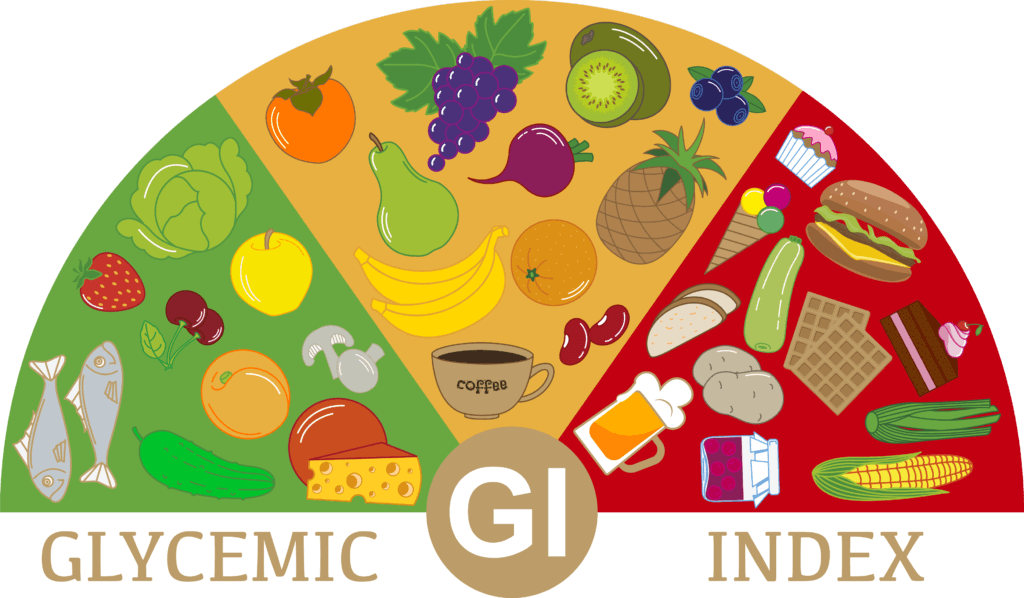- Empty cart.
- Continue Shopping
How to Understand the Glycemic Index of Foods

The Glycemic Index (GI) is a valuable tool for individuals seeking to manage blood sugar levels and make healthier food choices. Below is a comprehensive overview of the Glycemic Index and offers practical tips on how to interpret and utilize it effectively in your diet.
Understanding the Glycemic Index
1. Defining the Glycemic Index
The Glycemic Index is a numerical scale that ranks carbohydrates based on how quickly they raise blood sugar levels. Foods with a high GI are rapidly absorbed, causing a quick spike in blood sugar, while those with a low GI are digested more slowly, resulting in a gradual and steady release of glucose.
2. GI Values: Low, Medium, and High
- Low GI (0-55): These foods are digested slowly and have a minimal impact on blood sugar levels. They provide sustained energy and promote satiety.
- Medium GI (56-69): Foods in this range have a moderate effect on blood sugar levels. They are absorbed more quickly than low GI foods but slower than high GI foods.
- High GI (70 and above): These foods are rapidly absorbed, causing a sharp spike in blood sugar levels. They should be consumed in moderation.
Applying the Glycemic Index in Your Diet
3. Balancing High and Low GI Foods
Incorporating a combination of low, medium, and high GI foods in your meals can help regulate blood sugar levels and provide sustained energy throughout the day. Pairing high GI foods with sources of fiber, protein, and healthy fats can help mitigate their rapid impact.
4. Prioritizing Whole, Unprocessed Foods
Whole, unprocessed foods tend to have a lower GI compared to their processed counterparts. Opt for whole grains, fruits, vegetables, and legumes to provide a steady and sustained release of glucose.
5. Considering Glycemic Load (GL)
While the GI is a useful tool, it doesn’t take portion size into account. The Glycemic Load (GL) combines the GI value with the actual carbohydrate content of a serving, providing a more accurate reflection of a food’s impact on blood sugar levels.
6. Being Mindful of Cooking and Preparation Methods
Cooking methods can influence a food’s GI. For example, overcooking pasta or rice can raise their GI. Opt for methods like steaming, boiling, or roasting to help maintain a lower GI.
Interpreting Food Labels and Resources
7. Reading Food Labels
Some food labels now include information about a product’s GI. This can be a helpful tool in making informed choices at the grocery store. Look for products labeled with low or medium GI values.
8. Utilizing GI Databases and Apps
Several resources, including online databases and mobile apps, provide comprehensive lists of foods and their corresponding GI values. These tools can be invaluable in planning balanced meals and snacks.
Monitoring Blood Sugar Levels
9. Personalized Glycemic Response
Individuals may respond differently to the same food due to factors like metabolism and overall diet. Regular monitoring of blood sugar levels can help you understand how specific foods affect your body.
10. Consulting a Healthcare Professional
For individuals with specific dietary concerns or medical conditions like diabetes, it’s essential to consult a healthcare professional or registered dietitian. They can offer personalized guidance on managing blood sugar levels and utilizing the Glycemic Index effectively.
Conclusion: Empowering Dietary Choices with the Glycemic Index
Understanding the Glycemic Index empowers individuals to make informed dietary choices that promote stable blood sugar levels and overall well-being. By incorporating a variety of low to medium GI foods, prioritizing whole, unprocessed options, and utilizing resources like GI databases, you can take proactive steps towards a balanced and healthful diet. Remember, knowledge is the key to making choices that support your long-term health and vitality.








